Tesla is Going to $1,000 Per Share
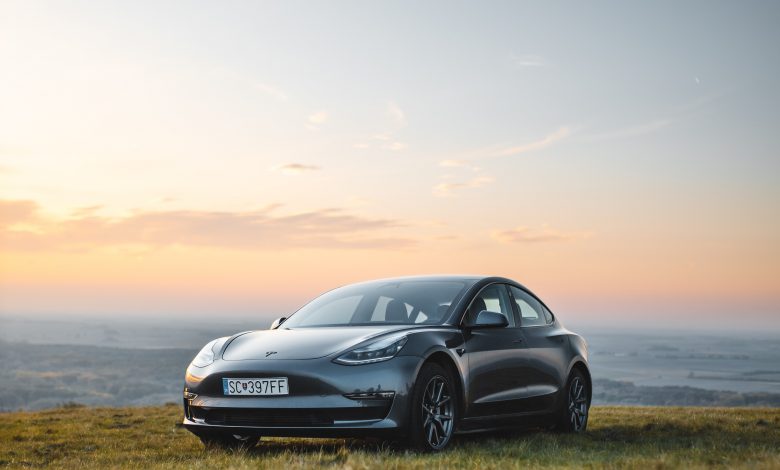
Strategic emerging companies have become significant drivers and achievers of restructured industries in the current global economy. Liu & Meng (2017) hold that innovation and technology are the leading strategic approaches adopted by these emerging companies and industrial sectors, which have also much challenged and influenced traditional players in their sectors. Tesla, Inc. (NASDAQ: TSLA) is one of the emerging companies that have brought irreversible change to their industries and laid out a roadmap for the future of these sectors in terms of technology and innovation. As Thomas & Maine (2019) note, the entry of the company has transformed the automotive industry globally, irrespective of the vast uncertainties held by the bears regarding the future of the company. The company has since its founding experienced dynamic growth despite various financial setbacks at different points of its growth cycle. The varied opinionated predictions of stock prices and growth increase the indecisiveness of investors as the company continues to grow and expand to different geographical regions and in product perfection and differentiation.
Tesla Tesla (TSLA) has experienced growth since the inception of the company. In an article on CNBC, Hecht (2019) notes that the company had a 1,000% growth in market value since 2010 when it began its stock sales. Consequently, the share prices have grown over these years. The development has been attributed to different factors, including the company’s business model, innovative approach, marketing strategies, and the CEO who has become the face of the company, among other aspects. Ron Baron, one of the billionaire investors, during an interview in CNBC in June 2019, held that Tesla’s share price was likely to get to $1,000 by 2020. Whereas this prediction may seem unrealistic, the current trading and trends of the company stock prices indicate great potential for the achievement of this goal. Considering current share prices, the niche operated by the company and competitors, Tesla’s visionary leadership, sustainable technological approach, and the overall future of electric vehicles, Tesla’s share prices will hit $1,000 in the future, since it has developed to a leading and disruptive company in the automotive sector.
This research argues that, although the company has had non-profitable fiscal years in the past recording yearly drops and highly volatile stock prices, the current operations indicate excellent potential for growth in the future where the share prices could hit an all-time high of $1,000 each. The rest of the paper has different sections, including the state of Telsa, internals, and fundamentals of the company, its leadership, roadmap, competitors, market analysis, an argument on where the stock price will reach $1,000, and the conclusion.

The State of Tesla
History
For more than a century, the automotive industry relied on internal combustion engines until the inception of an alternative that saw the rise of electric vehicles (Sierzchula, Bakker, Maat & Van Wee, 2012). This new dawn in this sector led to the birth of Tesla, an automotive company that was founded to provide substitutes for gasoline vehicles by using technology to develop highly efficient electric cars. Founded by a group of engineers in 2003, the company looked to improve efficiency and sustainability in the automobile sectors by producing products that used less energy and emitted little or no pollutants, while at the same time serving the needs of its consumers (Gebert, 2014). Headquartered in Palo Alto, California, Tesla ventured into a unique niche and partnered with different companies to achieve its envisioned purpose and products over the years (Gebert, 2014; Cecere, Gambino & Mollura, 2016). Aside from the geographical expansion and growth, each product has marked improvement in technology portraying vast innovative ideas and potential for improvement in the future.
With its sportive customer perspective, the company in 2008 introduced the roadster model, which was unique in every way compared to products by other players in the sector (Cecere, Gambino & Mollura, 2016). According to Cecere, Gambino & Mollura (2016), the car had unique features, “accelerating from 0 to 60mph in 3.7 seconds and achieving a range of 245 miles per charge of its lithium-ion battery.” Compared to gasoline-powered vehicles and the environmental impact of this product, the efficiency of the car was undoubtedly unique and also achieved the sustainability goal of the company. Although the product did not reach the intended or targeted market share, it paved the way for technological advancement to produce a more advanced model that acquired a higher market share with each production (Cecere, Gambino & Mollura, 2016). One major setback was the high price of the vehicle, indicating that the company had to provide a cheaper priced model through improved production.
Aside from changing the nature of the products to meet its market share, the company also intended to increase its production by raising the number of units produced annually while at the same time targeting a broader customer base. In 2010, on the verge of bankruptcy, Tesla announced its intention to go public to raise funds for its continuity (Cecere, Gambino & Mollura, 2016). The move became a success with the stock selling at $17 per share (Hecht, 2019). Before going public, the company had attracted the interest of venture capital companies and private investors (Cecere, Gambino & Mollura, 2016). The current CEO became the highest private investor with $7.5 million after joining the company as chairman of the board of directors. According to Cecere, Gambino & Mollura (2016), the company had sold stock worth $13 million to other private investors in 2005. Later, shares were sold to eBay and google as technology partners before publicizing the company in 2010. The various shareholders have consistently expressed their hope in the electric vehicle company over the years, despite the company operating at a loss.
Like many other tech companies, Tesla has managed to maintain its niche by increasing its innovation strategies compared to the mature competitors in the automotive industry. Most of these mature operators such as General Motors and Ford have had a stable market cap in the past close to five years compared to tech companies such as Apple, which have experienced consistent growth over the same period. As of 2017, the market capitalization of General Motors (NASDAQ: GM) was at $50.60B compared to Apple (NASDAQ: AAPL), which was at $745.48B, as shown in Figure 1 below. Tesla lies between the two groups as an automotive and tech company, explaining the increasing growth of the company. Therefore, the development of this automotive company is expected to surpass those of traditional automobile companies and be closer to that of tech companies. This has been evident in the recent increase in the stock prices of the company going beyond those of other automobile companies (Reinicke, 2020).
 Figure 1
Figure 1
Source: Ycharts
The Current State of Tesla
Lying in between tech and automobile companies, as shown in Figure 1, Tesla competes with other car manufacturers and also strives to remain innovative and competitive among other tech companies. This has been the leading strong point towards the differentiation ability of Tesla and the success source in production and operation. As mentioned by Hecht (2019), the company has experienced a 1,000% growth in its market value, considering the $17 share price in 2010 and the $230 range as of August 2019. The trend has continued, and as of December 2019, the company’s shares were selling at $393.15, a 3.74% rise from the previous day (Feuer, 2019). As predicted by Ron Baron during his interview at CNBC, Tesla’s share prices have continued to increase every day. As this trend continues, the market cap of the company is also growing, attracting more investors and increasing skeptic comments from the bears.
True to Ron Bron’s prediction, Tesla’s stock price as of 9th January 2020 was at $498.44 and showing an indication of continuing the upward trend (Reinicke, 2020). This is amidst the predicted capital shortages in the company despite the optimistic investment advice coming from the bulls, who still believe that the company is headed for more success. However, it is difficult to ignore the past experienced volatility of the company’s stock prices. In Figure 2 below, presented by Hecht (2019), a close to ten year period of comparison shows the prices rising to very high figures and later dropping. The figure shows that, since 2013, the company has experienced growth with the stock prices increasing each year.

Figure 2
Source: Hecht 2019 (CNBC)
On the other hand, it is evident from Figure 2 that the prices have experienced sharp drops in share prices, such as in the last quarter of 2014, where the price dropped to below $150. Other periods were good business periods for the company whereby the share prices went to all-time highs, such as in 2017 exceeding $350.00 (Hecht, 2019). Additionally, the chart shows that, at the close of this day in August, the stock price was at $218.77, compared to $393.15 in December (Feuer, 2019), which is absent in this chart. This indicates the possibility of the price fluctuating from high levels to lower ones and vice versa. However, the company is currently experiencing consistent growth, which, according to the CEO, should last longer than the skeptics anticipate.
The growth being experienced by the company may be short-lived as past experience has proven, irrespective of high hope by various investors regarding the sustainability of this growth. After raising money and investing in projects to increase production, the company’s assets and revenue have grown (Molnar, 2019). However, as Molnar (2019) states, concerns regarding the growth of income without profitability cannot be ignored. Molnar also holds that future predictions have been made based on these revenues, which do not consider the lack of profitability of the company, even after being operational for close to two decades now. As shown in Figure 3, the company began experiencing growth of share price since 2012, which remained consistent until it reached the highest price, exceeding $350 in the first quarter of 2017. This is similar to the current state of Tesla, where prices have hit an all-time high and are expected to continue in the next few days.
 Figure 3
Figure 3
Source: Molnar 2019 (Forbes)
However, the trend changes after reaching the highest price of the shares, and a drop begins. After achieving this all-time high share price in early 2017, the company began experiencing a gradual decline in the stock prices, accompanied by fluctuations that increase the uncertainties of investors (Molnar, 2019). These fluctuating prices led to a dramatic drop in the share prices in the first quarter of 2017, as shown in Figure 3. The same trend can be expected in the future of Tesla, which is currently experiencing growth. Whereas the profitability of the company remains the primary issue of concern for many individuals and interested investors, the question as to whether the company is overvalued still lingers as divided opinions differently define Tesla (Molnar, 2019). The growth has, however, been experienced in other dimensions in the company, from geographical expansion to market coverage.
Tesla rose to become the valuable leading carmaker in the US after overtaking former giants Ford and General Motors in 2017 and lately in 2020 (Reinicke, 2020). The market cap of this company exceeded that of both Ford and General Motors, although it continues to fluctuate (Reinicke, 2020). According to Hecht (2019), Tesla has never managed to remain profitable throughout a fiscal year but instead reports profitability over different financial quarters over several years, despite the continuous rise in the price of the shares. This is despite the company remaining the leader in the production of electric vehicles and covering both local and global markets, whereby according to Sierzchul et al. (2012), the competitiveness of this sector is expected to increase, as the industry is still in the introductory stage. From this perspective, it shall be crucial for the company to focus more on profitability than on expansion.
Tesla minimizes costs by producing most of its raw products. The company owns a Giga factory in Nevada and also has several assembly and production plants (Gebert, 2014). The primary manufacturing plant for its vehicles is in California. The main products sold by the company include its latest car, Model 3, Model X, and Model S. Currently, Tesla has expanded to solar production after taking over Solar City and thereby produces energy generation products. These include batteries (Powerwall and Powerpack batteries) and solar panels, as well as solar roof tiles, all of which have contributed to the goal of the company in promoting the use of sustainable energy.
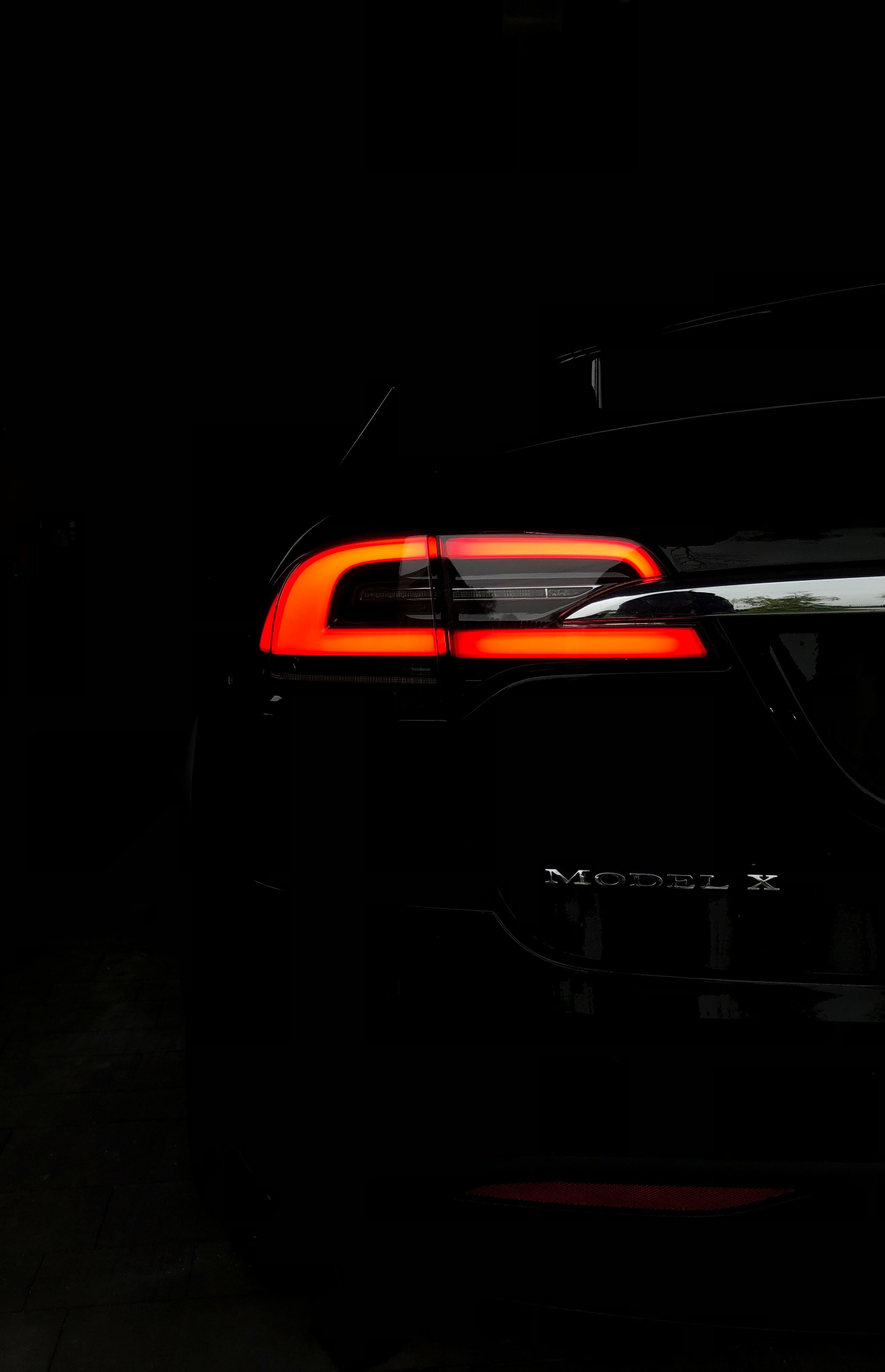
The Internals and Fundamentals of the Company
Tesla has been rising in stock prices and popularity as the sales increase each year, a trend that has been viewed differently by analysts. The stock price of the company grew from $17 in 2010 to the current range of $450 in January 2020, a 1,000% increase (Hecht, 2019). Whereas investors in the company have supported this trend, some analysts believe that the company has been overvalued since it is still struggling to find a stable position in the automotive industry, which already contains mature companies. However, the company continues to focus on increasing production and the quality of its products in an attempt to establish its position as the leading electric car manufacturer globally. Just like any other company, Tesla has had several legal issues, including the recent scandal with its CEO. According to Feuer (2019), the SEC sued Elon Musk, the CEO, for a post on Twitter, where he claimed that he was considering securing a percentage of the company’s shares. Although the matter was settled internally where Musk was forced to pay a fine, such sentiments may affect the company’s performance considering the impact they might have on investors.
The company is rooted in manufacturing and innovation fundamentals. Tesla concentrates more on improving its operations through the use of technology. This is evident in the organization’s decision to use social media marketing instead of traditional advertising methods. Riley (2019) considers this a fundamental requirement in the electric car market, terming it a competitive technological market. Technology is vital, and Tesla continues to focus more on research and development (Bhavani, 2018). Bhavani (2018) states that the amount spent on research and development has reduced for the company with a 6% decrease from 2015 to 2017. This can be attributed to the company’s ability to cut on some costs, especially after the construction of Giga factories. Most of the other expenses increased during this period, including selling general and administrative and employee and labor (Bhavani, 2018). The company aims to reduce its production costs for it to provide cheaper vehicles. However, each model produced has not met this goal, and the company continues operating at a loss. It has also not been able to pay dividends to its investors despite reporting increasing revenues for the past few years.
Leadership
Leadership at Tesla is highly associated with CEO Elon Musk, who, according to Wagner (2020), is the most influential figure in the company. Whenever Musk is mentioned, Tesla appears in the picture, and whenever Tesla is mentioned, Musk cannot be left out. The achievements of the company have been termed as visions of Musk, which he addresses as his vision for the company. Musk is in charge of the product strategy of the company and is also among the founders of the company (“Tesla Management”). Another prominent figure at Tesla’s leadership is the chief financial officer. The former CFO Deepak Ahuja resigned from his position in 2019 after being blamed for the company’s financial problems (Atkins, 2019). Whereas this was the second time the CEO was resigning, the company has not had any successful years of operation and is still unable to pay dividends to investors. The current CFO is Zachary J. Kirkhorn (“Tesla Management”). His responsibilities as CFO include “leading accounting, financial planning and analysis, treasury, M&A, tax, investor relations, and internal audit” (“Tesla Management”). He has worked in the company since 2010 and is expected to bring financial changes to the company.
Another influential figure in the company is the chief technology officer Jeffrey Brian “JB” Straubel. He is one of the co-founders of the company and is tasked with overseeing engineering and technical designs of the cars developed at Tesla. Incorporating a co-founder in the leadership team is a good strategy for the company that has helped lead the company towards the achievement of its goal. In a critical analysis of the company’s leadership challenges, Atkins (2020) notes that one aspect that the leadership needs to cut on is the costs involving them, such as international travels of a single person. However, this can be challenging for a developing company, which needs to sell itself beyond the US borders. Additionally, the company needs to maintain its current CEO, who has an excellent vision for the company and also has the best interest as a co-founder.

Roadmap
Since Tesla began its operation, the company has focused on growth, especially increasing the market capitalization of the company, which equally increases the value of its shares (Kancherla & Daim, 2018). The company first released its model, Tesla Roadster, in 2008 and sold about 1800 units the same year, as shown in Figure 4 below. Since then, the company has experienced increased sales for its products. The release and sale of Model S exceeded that of the Roadster and sold 20000 units annually (Figure 4). Although the figure below does not include the recent Model 3, it has been the best sale of the company. The model gained acceptability globally and sold more units than any other model.

Figure 4
Sourced: CleanTechnica.com
The company has also increased its production over the years. In 2019, Tesla exceeded its production goal (Reinicke, 2020). Additionally, it was able to deliver more than the cars produced by its Shanghai Giga factory. Similarly, the revenue of the company has experienced an upward trend that is similar to that of the amount of sales made each year (Reinicke, 2020). However, Tesla has made no profits since the beginning of its operations. Although the company is considered successful, it hasn’t been able to pay dividends to its investors. The company has also had financial challenges by running out of cash, forcing it to sell its shares. The future of Tesla may be assured of financial success, considering the current trends in production, sales, and stock prices.
Competitors
Tesla operates in the American and global automotive industry, covering both the local and international markets. The company adopts high technology to develop its products, which aim at improving energy sustainability (Kancherla & Daim, 2018). The overall purpose of the company requires high innovation and technology, which makes it both a high tech and car manufacturing industry. As illustrated in Figure 1, the operation of Tesla will most likely lie in between the high tech companies, such as Apple and Amazon, and that of traditional car manufacturers, including General Motors and Ford, which are critical operators in the country. The market cap of the company has also currently exceeded those of these incumbent car manufacturer, confirming this approach (Reinicke, 2020). However, the involvement of the company in two highly competitive industries increases the number of competitors for the company.
In the automobile sector, most car manufacturers have been reliant on gasoline-powered engines, which provided the niche for Tesla. However, the products produced by these companies still offer substitutes for consumers. Currently, most car owners use gasoline engines, primarily due to the availability and affordability of the products. As a battery-powered car manufacturer, Tesla faces stiff competition from gasoline-powered vehicles, which, unlike tesla products, have highly available accessories, including gasoline stations. Additionally, the availability of gasoline substitutes in parts of the world unreachable by Tesla has further increased the competition for the company. According to Hecht (2019), the company has not reported a profitable fiscal year since it began its operation. It will be necessary for the company to develop products that substitute gasoline-powered vehicles at an equal measure to overcome this competition.
Another factor of competition in this industry is the availability of cheaper vehicles, unlike Tesla, which has highly-priced electric cars. Although there are no more affordable electric cars, gasoline-powered cars are cheaply available for consumers. Despite the intention of the company to expand to other regions, its inability to produce cheaply available vehicles may be a setback. According to Sierzchula et al. (2012), the costs involved in the manufacturing of electric cars have been a challenge for the production of cheaper models and, thus, the inability of such companies to serve an extensive market limiting its market to those with significantly higher incomes and environment lovers. Most consumers will purchase products based on their prices, where price has more influence than other factors. Tesla intends to produce cheaper cars, which will not only increase its market share but also may lead to a profit increase for the company.
On the other hand, the company competes among other technology companies in an attempt to remain highly competitive in the market. This is due to issues related to intellectual property ownership. One of the factors that have led to the high pricing of the company’s products is the high-end technology used by the company for its products Sierzchula et al. (2012). For instance, the autopilot factor in its latest model comes as a factor in attracting customers. Although the accident involving one of Tesla’s electric cars while self-driving has become a major legal issue for the company, it is one of the aspects absent in the cars produced by its competitors. However, the company needs to pioneer more technology that it might require in the future development of the company’s products. Owning intellectual rights to a particular technology is significant in maintaining its use and reaping its benefits, either by developing its products based on this technology or by patenting it for use by other competitors. On the other hand, purchasing the rights for the use of these technologies may be expensive. It may limit the development of products to acceptable consumer levels, increasing the lack of competitive advantage of the company.

The electric car production industry is still at the introductory stage, as Sierzchula et al. (2012) hold. It is expected that more companies will join the industry, thereby increasing competition. Currently, Tesla is the leading company in the production of electric cars, but this may not be the case in the future if the company is not able to maintain its competitive advantage. New entrants will increase the competition, which will equally attract other competitors. Incumbent car manufacturers have begun exploring these possibilities, although not many have been successful in the sector Sierzchula et al. (2012). However, as they continue becoming more innovative, it is expected that the companies will increase their production and specialization in more sustainable products, an issue which is currently listed among the objectives of many companies. The continuation of this trend will increase the competition in the electric vehicles manufacturing sector, which is now still low compared to other sectors.
One of the expected trends in the competition is the production of unique products by each company with different technological characteristics. Innovation is expected to increase, and new inventions dominate the car manufacturing sector to increase the comfort and luxury of each product. The inventions will also involve patenting, which will increase the threats associated with intellectual property rights. Many companies will invest more in research and development, which will consequently increase the capital spending of each company, including Tesla (Sierzchula et al. (2012). Anticipating such trends in the future is useful to maintain a competitive advantage for each company. For Tesla, preparing for such threats in the future can be easier, especially if the company is able to establish its market share before the entry of other competitors in the sector.
The current competitors of the company are other automotive companies. As mentioned above, these companies are dominant and mature operators in the automotive industry. The companies have established markets that they serve and enjoy customer loyalty for their different products. According to Gebert (2014), the availability of substitutes for consumers is one of the challenges for any company. In the case of Tesla, the available alternatives are the gasoline-powered vehicles produced by its key competitors. Additionally, the company has only three different cars available for its products. Compared to other companies, the company lacks a variety of options for its consumers, which increases the competition from other competitors. The company should focus on increasing the availability of choices, which is also an influential factor for attracting customers. Although this may increase the capital spending of the company, it can be useful to maintain the market share in the future when other entrants grow the competition.
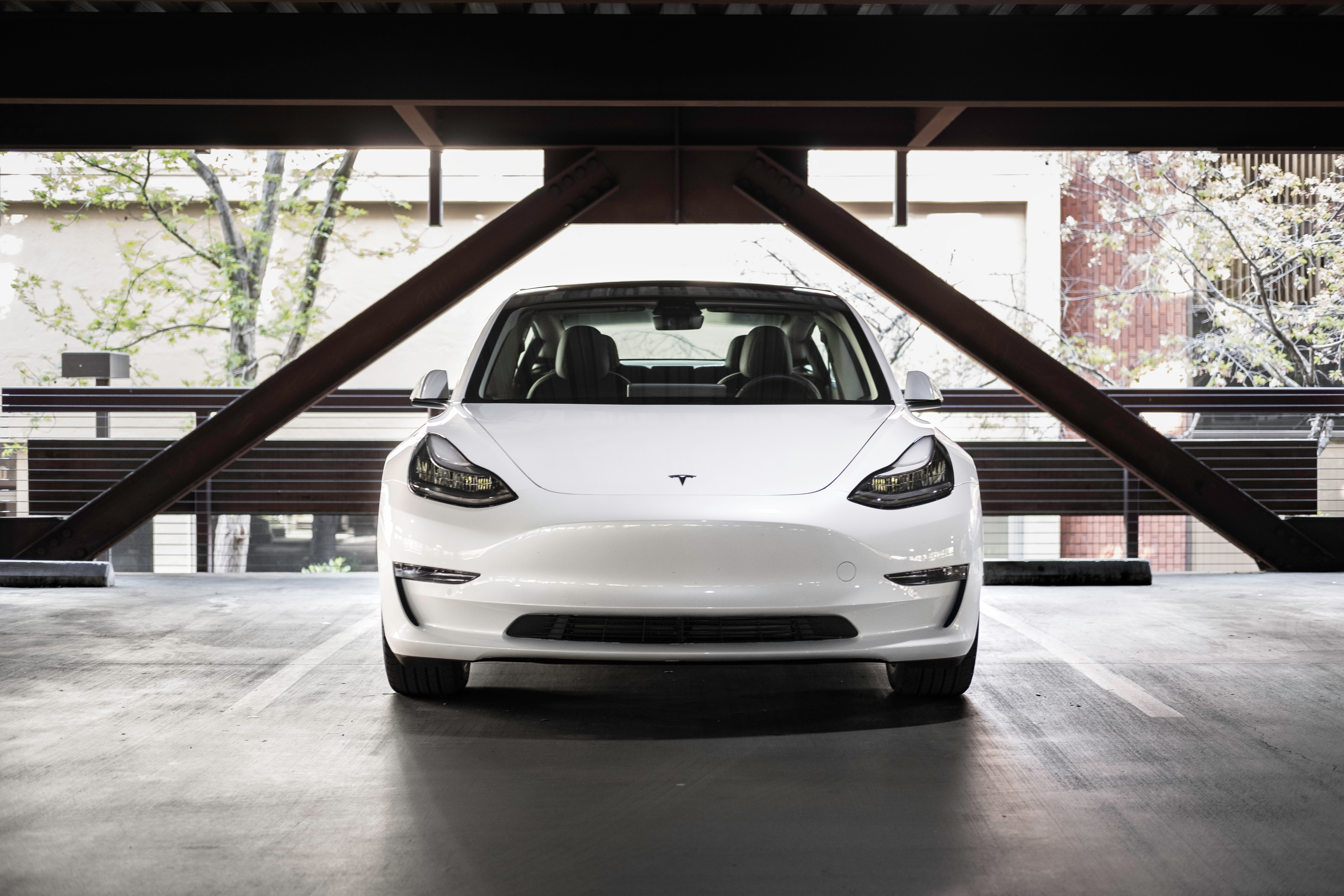
Market Analysis
The electric vehicle market is still in the introductory stage and is still growing and expected to expand by incorporating new technology (Sierzchul et al., 2012). According to Sierzchul et al. (2012), the industry has, however, not achieved its primary goal of offering alternative and sustainable methods of transport, which are environmentally friendly. Tesla, the leading company in this sector, has not been able to provide affordable electric vehicles to the general population, considering that all of its cars are highly-priced, making it a luxurious brand, unlike its competitors. Additionally, Sierzchul et al. (2012) claim that another barrier to the complete adoption of this technology in transportation pertains to the different batteries, which have brought a significant difference in battery performance and the trade-off between these products. This aspect is critical for the electric vehicles niche, which is highly characterized by product quality and differentiation (Chen & Perez, 2018). Therefore, focusing on developing the most appropriate and competitive products is vital for this sector.
On the other hand, the electric vehicle market portrays an excellent potential for growth. This trend is evident from the current position of Tesla, which has marked consistent growth since inceptions, despite struggling with financial setbacks at different points of its life cycle. One significant driver is the concern associated with climate change. In recent years, individuals, organizations, and governments have been at the forefront of reducing the causes of climate change, whereby industrial and regular activities are the leading contributors to global warming (Thomas & Maine, 2019). According to Thomas & Maine (2019), automotive emissions are among the highest source of pollutants in the environment. Therefore, the introduction of electric vehicles is set to gain high acceptance and support all over the globe, evident from Tesla’s operation and market coverage. With this in mind, the market for the items produced by the company has to achieve environmental sustainability, which has been the leading goal of the company. It also indicates that the products have a ready market.
After the recent rise of Tesla as the most valuable car manufacturing company above incumbents such as Ford and General Motors, more attention has been directed to the market served by the products produced by the company (Cecere, Gambino & Mollura, 2016). Among these products include solar products, which, despite being unrelated to car manufacturing, are a significant contributor to the mission of the company. However, the growth has been termed as a market overreaction, but the company investors consider this a continual development of the company (Thomas & Maine, 2019). This move can be regarded as an overreaction when compared to incumbent car companies such as General Motors, as seen in Figure 1. On the other hand, as a tech company, the growth in market value may not be a market overreaction but instead a permanent-growth trend considering the products, production strategy, and market strategy adopted by Tesla compared to other automotive companies. However, the company’s products are still leading in the US electric vehicle market, as shown in Figure 5 below, whereby Tesla electric car models are the most purchased.
 Figure 5
Figure 5
Source: Forbes
Conducting an industrial analysis of the electric vehicle market can assist in determining the market position of the company. This sector is characterized by specific consumers who have limited bargaining power. Electric vehicles have a higher production cost, which has made their prices be hyped, limiting the number of consumers. Tesla, in its production, has tried to produce the most affordable cars, which are still expensive for the majority of the global population, making it a luxurious brand. Whereas the high prices can be attributed to the production expenses, consumers have no control over the prices set by the company. This is because the company may not be able to switch costs and also due to the difference in the accessories (Gebert, 2014). According to Freur (2019), Tesla had intended to reduce some of its costs this year to offer affordable electric cars and increase profitability, primarily in its Giga factory in China. However, Freur (2019) asserts that no significant progress was made in achieving this goal, considering that the Model 3 sedans made in China did not reduce in price. This event indicates the little bargaining power of the consumer in this sector.
The supplier bargaining power in the electric vehicle sector began being very low but continues to change over the years. Gebert (2014) claims that the bargaining power of the suppliers is higher, considering the available battery manufacturers dealing with Tesla. According to Gebert, there are few suppliers of these critical products, which increases their bargaining power. However, as the company develops, it has formed alliances and built factories allowing it to eliminate most of these challenges. The company partners with Toyota and Daimler to ease most of its costs, and has also opened a Giga factory to produce its batteries. In the future, the bargaining power of suppliers will reduce.
On the other hand, the rivalry among companies is expected to increase as more companies venture into electric car manufacturing. Although the threat of new entrants may seem highly possible due to the appealing potential growth of the industry, the large capital requirements are likely to discourage new entrants. Gebert (2014), however, claims that the threat of new entrants remains high, considering that as the entire globe moves towards sustainability, the incumbent automotive industries are likely to be attracted to the market niche of electric car manufacturing. This will increase not only competition, but also the availability of substitutes, which is currently very low (Gebert, 2014). An assessment of this industry indicates that the future will be characterized by a higher competition, which requires Tesla to develop a sustainable competitive advantage to protect its market share in the future.
Tesla has a broad market coverage, with its products reaching its customers around the globe. According to Wagner (2020), Tesla’s Model 3 is currently the best-selling electric car globally, as shown in Figure 6 below. The USA is the company’s primary market, which comprises a majority of high-income earners since the brand has developed to a luxury brand due to the high prices of the cars. Wagner states that the country leads in the purchase of the Model 3 cars produced by Tesla ahead of other countries. China comes in second with a significantly high market share, which is ahead of most European countries (Statista, 2020). This can be attributed to the opening of a manufacturing plant in the country, allowing the products to be readily available for purchase locally. In Europe and the Netherlands, the leading consumers are Netherlands and Norway (Statista, 2020). This market coverage is expected to increase in the future, whereby the CEO Elon Musk expressed intentions of the opening of a Giga factory in Berlin (Freur, 2019).
 Figure 6
Figure 6
Source: CleanTechnica.com
Another significant factor of the electric car market is the criticality of product differentiation, which significantly influences the revenue and market share. Comparing the different products developed by Tesla, the first model failed to meet the expected sales revenue, production target, and anticipated profits. The car did not sell as expected, making the company advance its second production. As a high tech and innovative company, Tesla has increased the quality and competitive aspects of each product released to the market, making each better and more acceptable in the market. This is evident from the acceptability of the first electric car compared to the last Model 3, which, according to Wagner (2020), is also the best in quality among the three.
Chen & Perez (2018) hold that the Tesla has achieved its market share by strategically developing highly competitive products that serve the current interests of not only its customers but also those of the entire globe, which has made the company succeed in a high-end market. By dealing with products that improve energy sustainability and environmental efficiency, Tesla has managed to create a market for other companies willing to venture into the sector, not only in the automotive industry, but also in other products, making the company attractive to foreign governments that could provide an opportunity for growth and expansion to other countries.
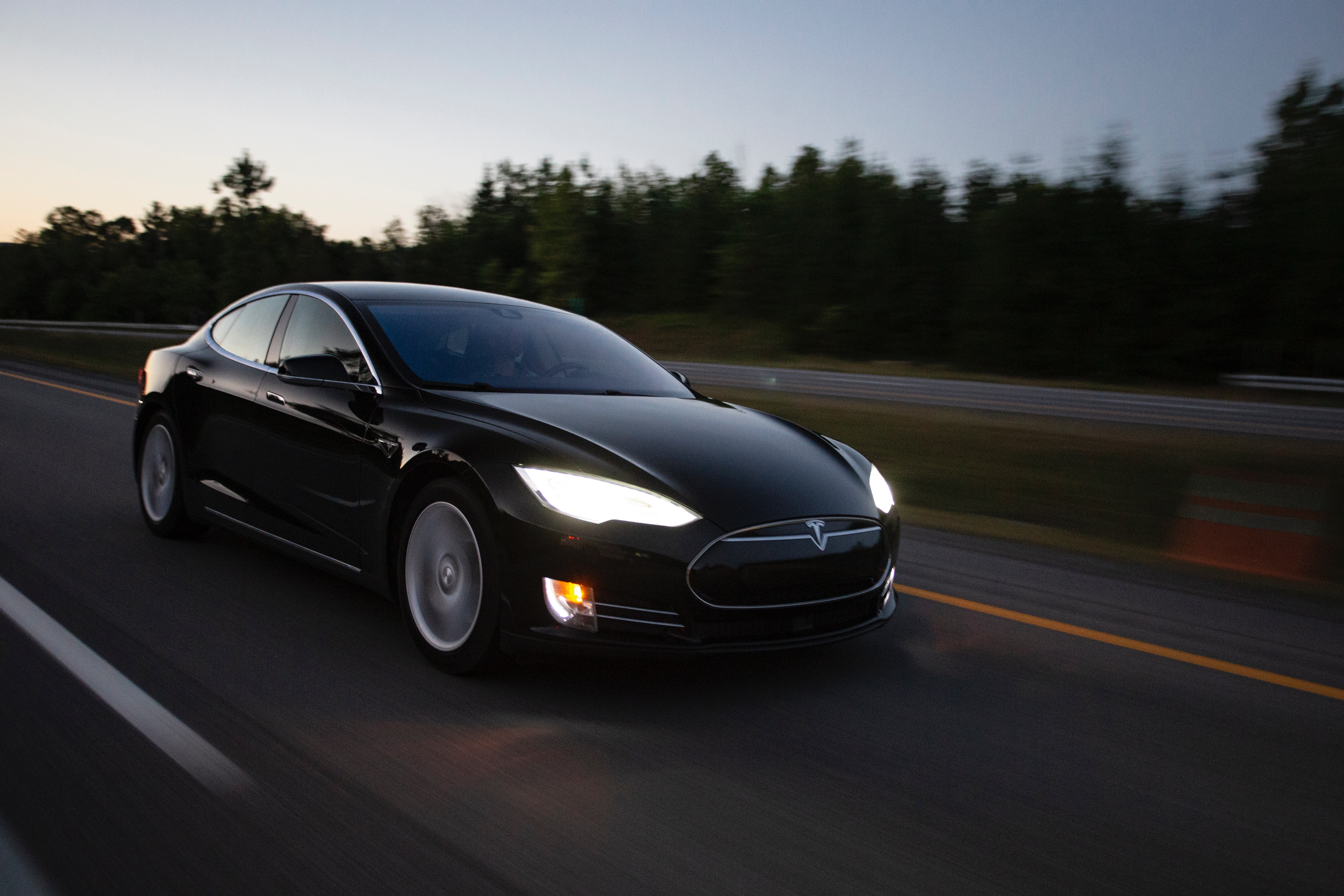
An Argument on Why the Tesla Stock Price is going to reach $1,000+ Per Share.
The Trend of Stock Prices
According to Hecht (2019), Tesla stock prices have grown by approximately 1,000% since 2010. When Hecht 2019 made this prediction in August, the company’s shares were trading at a range of $230. As of 9 January 2020, the share prices have risen to $498.44, indicating a growth of more than 1,000% from 2010, as shown in Figure 4 (Reinicke, 2020; Hecht, 2019). In one decade, the company has experienced this dynamic growth, which implies the possibility of continued growth in the next decade. Adopting a similar growth rate indicates that the company will achieve more than $1,000 for each share. The current growth strategies of the company also envision the same dream increasing the possibility of the achievement of this dream. Aside from this predictable growth strategy, the company has several other factors that will contribute to this increase in stock price.
Concerns regarding investing in Tesla are associated with the fluctuating prices of the company’s shares and the perception that the company is often overvalued based on products produced. However, as evident from Figure 7 below, the share price in 2019 reached the lowest price in June when it reached below $178.97 (“Tesla – Stock Price History | TSLA,” 2020). The company experienced the lowest stock prices in 2010 when the price reached $15.8. In the same year, the highest share price was $35.47. This year (2010) was when the company went public, whereby the stock prices marked a good start. Five years later, in 2015, the average stock price was $230.04 with a high of $282.26 and a low of $185, marking a growth of more than 300% growth since 2010. The highest annual change in the share prices was between 2012 and 2013, whereby the company experienced a 344.14% change. The stock prices declined in 2016, marking a -10.97% annual change, which can be associated with the Solar City merger. However, the company was back on its feet again in 2017, marking a consistent growth until the close of 2019 with a stock price of $418.33 (“Tesla – Stock Price History | TSLA,” 2020).
 Figure 7
Figure 7
Sourced: Macrotrends.com
The ability of the company to maintain consistency in the growth of stock prices is an indicator of its ability to continue growing in the future. This was amidst the financial crises during the ten years and the merger with Solar City, which had a significant economic impact on the company. According to Huang (2019), the stock prices of Tesla experienced an immediate slump after announcing the Solar City merger. On the other hand, Solar City’s prices began to rise after this merger, having suffered a decline, as illustrated in Figure 8 below. Comparing the two companies, the alliance was more beneficial to Solar City concerning stock prices. Whereas this might have had a negative impact on Tesla’s prices, its positive influence on the other company indicates the high value associated with Tesla. Additionally, the ability of the company to regain its steady growth shows the ability to maintain the same in the future, which may lead the company to $1,000 per share.

Figure 8
Source: Huang (2019)
An analysis of the 2019 stock price trend of Tesla also shows different rates of growth during different months, as shown in Figure 9 below. The fluctuations in the share prices are evident, especially between the different months. The company experienced the lowest stock price in June, as mentioned above, when the price reached $178.98 (“Tesla – Stock Price History | TSLA,” 2020). However, the same year recorded the highest rate since 2010, after hitting $430.94. This is the highest experienced price, which shows a growing trend in the company’s value of shares. In 2020, the price has exceeded all prices in the company’s history. As predicted by Ron Baron, the price reached an all-time high of $498.44 on 9th January (Reinicke, 2020). The prices still show indications of increasing as the growth trend continues. Reaching $1,000 per share may be closer than anticipated considering that the company may reach up to $600 and $700 per month.

Figure 9
Source: Reinicke, (2020)
Growing Company Revenue
Another factor that may contribute to the increase in the share prices is the increasing market share of the company evident from the growing revenue of the company. In the past years, the company has been increasing its production units, intending to service the increasing number of consumers. In 2019, the demand for electric vehicles from Tesla had risen in the European market, encouraging the opening of a Giga factory in the region, which, according to the CEO, will help serve these customers. Expansion to the European market will equally contribute to the growth of the company. According to Feuer (2019), the opening of the factory is anticipated in the coming year. This is the same period during which the company is expected to produce its new model, Model Y, which is also likely to increase the demand for electric cars in the region. Each model Y vehicle will sell at $39,000 to $60,000 a rate, which may not be too expensive for most buyers, especially in the European region (Feuer, 2019). The introduction of this model may increase sales and contribute to the growth of the company.
The company’s revenue has increased consistently over the past ten years. The income of the company has grown from $14.74 million in 2008 to $21,461.27 million in 2018, as shown in Figure 10. This growth in revenue indicates increasing sales of Tesla’s products. Huang (2019) calculated the growth rate each year, whereby from 2013 to 2014, the company experienced a 58.85% revenue growth. In the following period (2014 – 2015), the revenue growth rate reduced to 26.50%, increasing from 3196.36$ million to 4046$ million, as shown in Figure 10 below. The company’s revenue increased by 73.01% (2015-2016) and 67.98% (2016-2017), a trend that has continued in 2018 and 2019 (Huang, 2019). The consistent increase in revenue has also coherently increased the share prices over the years, although the fluctuations have been occurring throughout the period. Since 2018, the revenue has continued to increase, as has the share price of Tesla. Similarly, the market stock price is expected to increase as the revenue continues to grow, equally increasing the market cap.
 Figure 10
Figure 10
Source: Statista.com
Increasing Production
Each year, the company has targeted an increase in produced units, which is expected to increase in the future as the company reaches a broader market. Other regions, including Asia, have experienced a rise in the growth of electric car demands. As the leading producer of electric cars, Tesla will be experiencing more demand in the future, which amounts to more change in the future, increasing the need for additional production. The company may need to expand its factories to other regions, which also marks the rise in the value of assets as well as revenue (Huang, 2019). The rising market value of a company also increases its stock price. Increasing more assets increases the market value, which is the current trend of Tesla as it anticipates expansion to other regions in the world. Considering the current price of Tesla shares, which are currently exceeding $400 (Gov Capital, 2020), the company may reach more than $1,000 for each in the near future.
In the last four years, production has increased from 17,400 units from the first quarter of 2016 to 11,200 cars in the last quarter of 2019, as shown in Figure 11. The total units produced each year have increased over the years, with 2019 having the highest production. According to Reinicke (2020), the company announced that the total units produced in 2019 were 367,500 cars, which is slightly higher than the company’s delivery goal. Wayland & Kolodny (2020) state that the company produced 112,000 units, exceeding the 106,000 units estimated by WallStreet and meeting Elon Musk’s annual production goal. As illustrated in Figure 11, 2019 marked the highest year of production and met its goal of 360,000 – 400,000 units, which was a 50% increase from the previous year (Wayland & Kolodny, 2020). The company aims to increase its production in the coming years to meet its growing market worldwide.

Figure 11
Source: Statista
Whereas the production involved all the three models from the company, Model 3 had the highest units produced. According to Wayland & Kolodny (2020), the company’s goal was to create 9,300 Model X units, 9,800 Model S, and 87,900 Model 3 cars but exceeded the amount and also delivered more than produced cars. The increasing demand for Model 3 cars is set to increase its production in the company alongside the new Model Y. In the last quarter of 2019, the company produced 92,550 units of this model alone (Wayland & Kolodny, 2020). Compared to other sedans in the industry, Tesla’s Model 3 cars were among those with the highest market share among small and middle-sized vehicles, as shown in Figure 12. Most importantly, only Model 3 showed consistent expansion of its market share rising from less than 5% to close to 35% between November 2017 and May 2018. The market share of this car has increased in 2019 and is considered to be the best selling product so far from Tesla. Attaining this market share indicates the potential for growth in the future, which will significantly increase the market cap of the company. This trend will substantially increase the value of the shares.
 Figure 12
Figure 12
Source: StarkInsider.com
The competitors with the highest shares were BMW (NASDAQ: BMYY) and Mercedes (NASDAQ: DDAIF), each of which lost a considerable percentage of the market share. Each of the two companies producing the 3 Series and C Class respectively experienced a downward trend for the seven months. The other competing companies, Audi and Lexus, held an almost stable market share without losing much to its competitors (Figure 12). The trends of all the four competitors compared to that of Tesla shows that the company has a high potential of having the highest market share. Production of Model 3 is expected to increase in 2020, whereby more sales are anticipated both locally and globally. Although the market share shows the USA car market, it can be considered a representation of the global market. With Model 3 as the current leading electric car, the acceptance of Model Y may spur more growth for the company and thus increase the value of the shares.
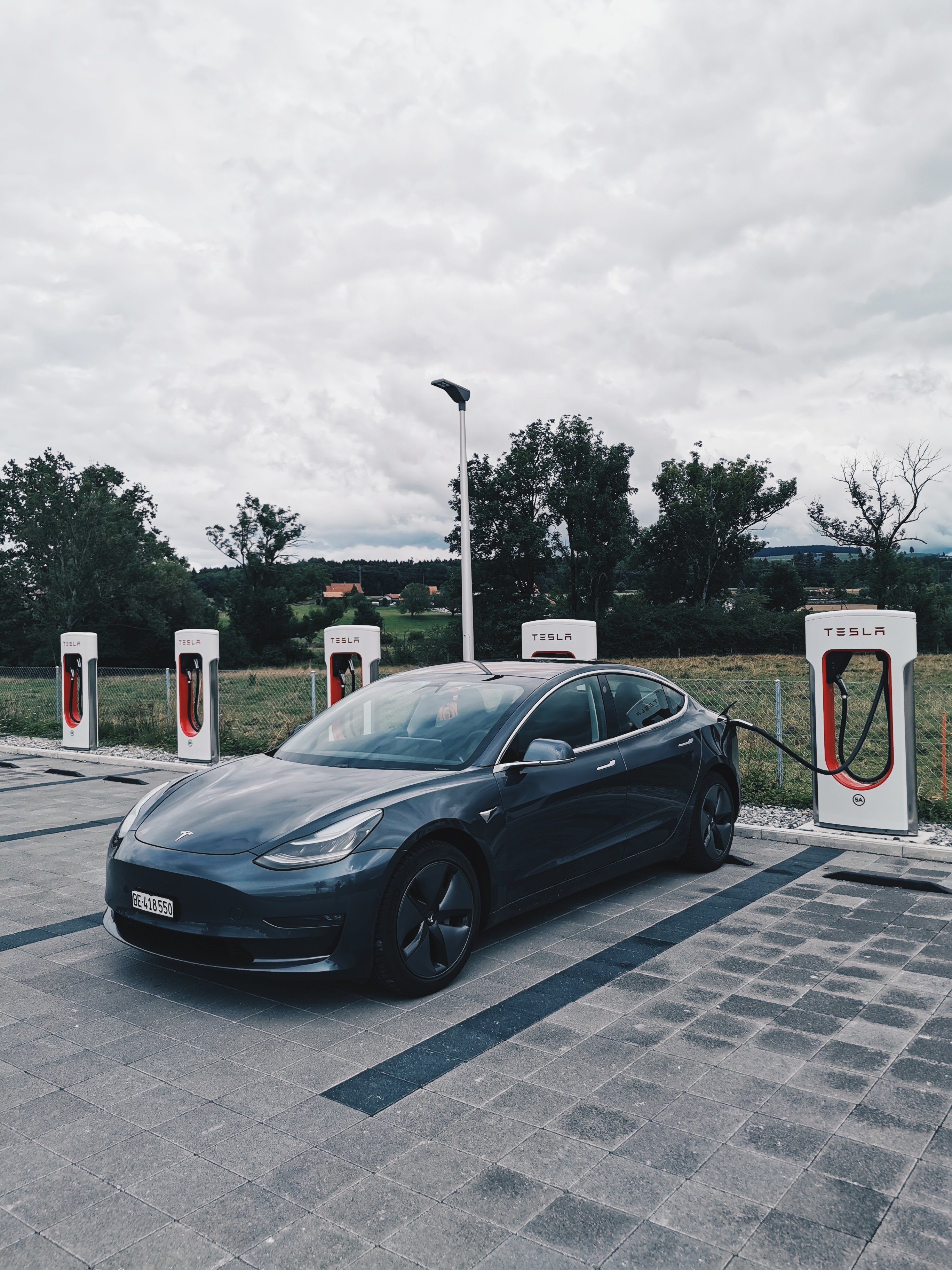
Company Leadership
The leadership structure of the company is uniquely planned, which has been attributed to the success of the company (Cornell & Damodaran, 2014). The current CEO, Elon Musk, who is also one of the founders of the company, has been in this position since 2008, allowing him to carry most of the initial goals and objectives to maturity. Additionally, the leadership of the company comprises other founders, whereby each holds a specific position and department, allowing the smooth functionality of the company. For a long time, Elon Musk has been considered the face of Tesla, and most investors are convinced of the company’s continuity based on the visions of this CEO. In his recent scandal with the company, most investors rallied behind this visionary leader, considering his objectivity as crucial for the growth of Tesla (Feuer, 2019). According to Wagner (2020), Musk was the most inspiring figure in the company and remains influential in the company. The leadership strategy allows independent decision making and incorporation of innovation easier from the perspectives of the different leaders. Additionally, having the other founders hold leadership positions also enables them to share common interests and goals, as well as ideas that may see the growth of the company to better places than it is now. This consolidated leadership also allows the shared visions to be developed in a way that expands the company and moves it to different levels.
The Future of Electric Cars in the Global Market
According to Cornell & Damodaran (2014), the automotive industry is well-defined, mature, and large, to which Tesla is part. Competitors in this industry are mature automotive companies whose products are well established among its customers and competitors. Operating in such an industry requires a new entrant to provide high quality products for it to create or acquire its customers and market share. Whereas quality is a primary factor, price, on the other hand, is highly influential and a key determinant of the number of sales for every company. In the automotive sector in the USA, Tesla’s cars are among the most expensive, making them only affordable for high-income earners. However, the company hopes to produce cheaper cars in the future, enabling it to serve more people (Cornell & Damodaran, 2014). This may be useful for the company to fit as a major player in the car industry since it still considered as one of the young companies in this sector.
On the other hand, the changing technology and preferences of individuals are expected to transform many sectors, including the automobile sector. Whereas vehicles were initially considered a luxury, especially when highly-priced, other arising issues may eventually eliminate such perceptions. Climate change is one of the contemporary global concerns, which is being addressed from all possible perspectives (Thomas & Maine, 2019), and also the niche served by electric cars, developing products and services which are environmentally friendly and equally contribute to the conservation of the environment. The automotive industry has embraced this global objective intending to help the transition towards more sustainability. However, as Cornell & Damodaran (2014) opine, technology and innovation are critical factors for the future of this sector, which puts Tesla ahead of other competing companies. The company is among the leading high tech industries that are also expected to transform the automotive industry.
As a young company, in a sector that is still in the introductory stage, Tesla has been under criticism, especially financially, due to the increasing debt and operating at a loss for a long time. According to Hecht (2019), Tesla has not reported any profits in any fiscal year but has had several profitable quarters. Despite operating at a loss and not paying dividends to its investors, the company continues to thrive by increasing its production and sales volume and expanding globally. This indicates that unlike other sectors where companies are forced to close down after they fail to make profits, the electric car manufacturing sector is different and has great potential for growth. For Tesla, operating for more than ten years without making any profits is expected to have created doubts for investors and owners (Huang 2019). However, investors still express their hope in the company based on the sector that the company operates.
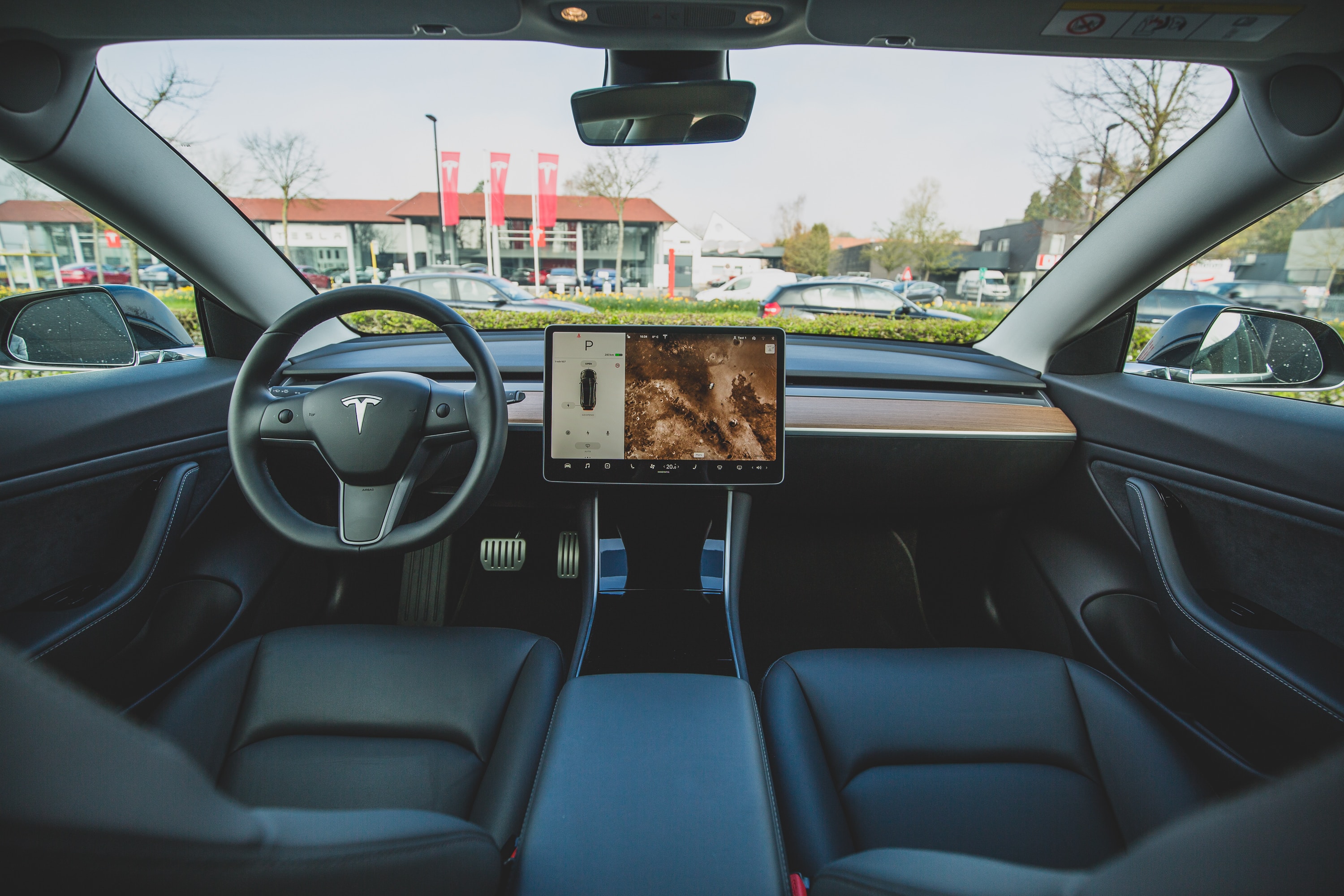
One of the strategies adopted by emerging industries and companies is the use of intensive technology to transform their sectors. Innovation is an essential strategy that these companies have taken to differentiate their products and improve on quality to achieve customer satisfaction. Liu & Meng (2017) state that the automotive sector is a capital intensive sector that adopts global technology. The industry requires the use of intensive technology to produce its items. Electric car manufacturing uses high-end technology and is expected to use the latest technology in the future. The current technological trend is highly beneficial to the sector, which will be an addition to the ongoing innovation in the industry. Tesla is way ahead of other automotive companies in terms of technological innovation, which is also an added advantage that makes the company competent (Liu & Meng, 2017). The company will, therefore, not have difficulties in transitioning to new technology, as it is part of the company. This implies that Tesla will spend little while incorporating new technology and thus be able to allocate such funds to other productive sectors that can lead to the growth of the company.
The invention of electric cars was initially meant to provide alternatives for gasoline-powered vehicles. However, in the contemporary world, electric cars are more associated with environmental friendliness than as alternatives for gasoline-powered vehicles . The development of batteries to power vehicles reduces pollutants in the environment compared to fuel cars. Although fuel is currently cheaper than the lithium-ion batteries, the environmental impact of fuel is adverse compared to electric vehicles. Therefore, the acceptability of electric cars is expected to increase as more people gain awareness regarding environmental conservation (Thomas & Maine, 2019). The need to mitigate global warming and contamination of the environment may see the growth of the industry in the future. Products developed in the future are expected to be environmentally sensitive, whereby Tesla is ahead of other companies. A prediction made by Riley (2019) regarding the use of electric cars compared to gasoline cars shows that electric vehicles will most likely overtake traditional vehicles, as shown in Figure 13 below. Riley (2019) asserts that by 2040, gasoline cars likely to be sold during this year will be 42.2 million units compared to the 48.8 million units of electric vehicles globally. Hybrid cars will be even lower, which shows that the sector is growing and will be leading the automotive industry in the future.
 Figure 13
Figure 13
Source: Riley (2019)
The different trends in the electric car manufacturing sector will positively impact or contribute to the growth of Tesla. The industry is expected to grow as more people appreciate environmental friendly products and consumption of sustainable energy considering the contemporary climatic concerns. Just as other environmentally conscious products have gained acceptance in society, the same is expected for electric cars. Additionally, as stated by Sierzchula et al. (2012), the company is still in the introductory stage and is expected to grow. The CEO of Tesla contends with this approach, noting that the production of its current models is still the beginning of the company (Riley, 2019). The electric vehicle industry is growing and increasing in value, which will raise not only the market value of each company but also the market cap of these companies. This will, as a result, boost stock prices. Acceptance of the sector will reduce the risks associated with the volatility of share prices and uncertainties related to the company as competition increases and the market broadens.
Aside from the acceptance of the new technology used by electric vehicle manufacturing companies, it is evident that the sector is growing at a faster rate than anticipated in the past. In an assessment of Tesla, BYD, and Toyota, Liu & Meng (2017) claim that all the three companies are expected to increase in technological innovation in the future as they venture more into vehicle manufacturing. For BYD, the company depends on product innovation and technology, which has contributed to its positioning among the leading tech companies in the manufacture of electric vehicles. For Tesla, the company is not only reliant on its product, as its name has become the company’s brand, which not only sells its products but also has been an essential determinant of the company’s stock trading (Liu & Meng, 2017). The competition, especially in product perfection among the companies, is a critical contributor to growth and development in the sector, which is evident from the current electric vehicles in the global market.
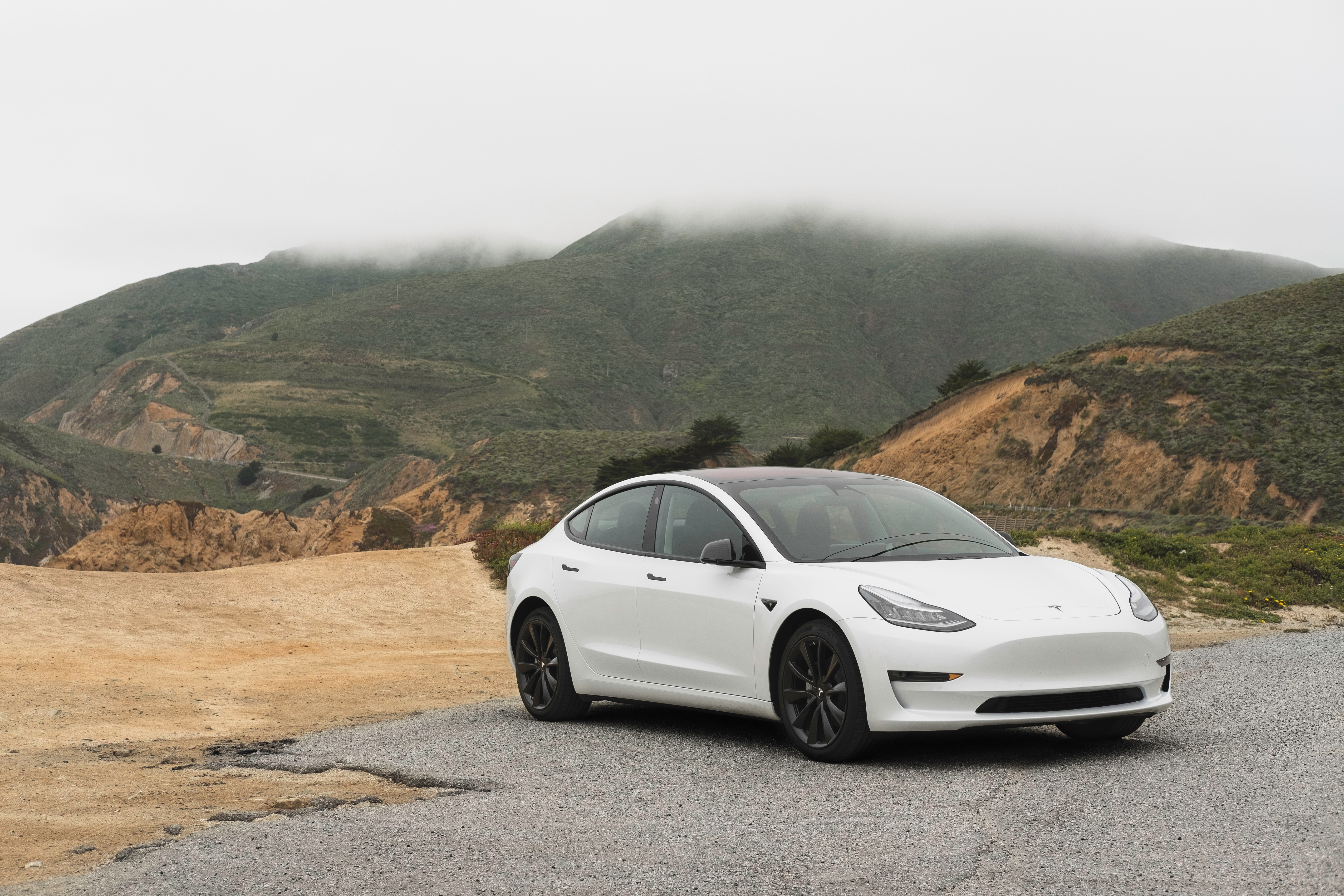
Tesla’s Marketing Strategy and Positioning
According to Liu & Meng (2017), the market positioning of a company is vital and should be strategically developed in line with the company’s programs and activities. The marketing strategy should be involved in each step of each program to ensure that the company does not deviate from the planned activities listed in the marketing strategy. In the electric vehicle sector, customer habits, charging time, and electric car infrastructure production are critical aspects when venturing into this market (Liu & Meng, 2017). This is because, while stile at the introductory stage, the industry has not met consumer needs, such as traveling with family, and therefore needs to be convincing enough for individuals with families to purchase even when the vehicle does not fulfill their desire. Technology has been the primary approach used to appease and attract consumers by developing the latest technological advancements in the car, which makes it attractive beyond other individual needs.
The electric vehicle sector is dominated by private cars manufacturing, which, as mentioned above, requires appropriate strategizing and market positioning. Liu & Meng (2017) assert that the companies compete against each other to provide satisfactory products to their customers, who are expected to overlook other needs and preferences in vehicles and choose these brands. For Tesla, the company has positioned itself as a luxury brand by providing luxurious sportive cars to its customers (Liu & Meng, 2017). The company has high quality and well-designed cars whose interiors are luxurious, making it a luxurious brand. The company targets the elite in the society who, beyond desiring the top quality, also want to try new vehicles (Liu & Meng, 2017). Additionally, the company has concentrated more on being the leader in quality that it has achieved with each model that it produces. Currently, Tesla’s Model 3 is the leading brand in the electric car sector, despite the product targeting the rich only. The company has succeeded in positioning itself as a luxury brand in the market. Each of its products has been a market leader, whereby this trend could lead to increased stock value in the future.
On the other hand, the electric vehicle market is changing, and as mentioned above, its acceptability as an environmental friendly oriented industry will lead to the demand for more products in the future. According to Liu & Meng (2017), the industry is currently divided between concentrating on private transport and constructing public transport vehicles. Tesla has focused on private cars. However, one of its key competitors, Chinese based BYD, has ventured into the development of public transport vehicles and currently has several models (Liu & Meng, 2017). In the future, Tesla may venture into this sector, which will be useful in ensuring that the company expands its market and positions itself to cover a broader market base. The company is known to be a leader in innovation led by a risk-taking CEO, which is an appropriate strategy to increase its operations. If the company chooses to shift its market position from the private sector to the public sector, its growth could be uncertain. However, by venturing into both areas, the company will be assured of growth in the future, which could see the stock process increase from their current position, which is already higher than many of its competitors.
In recent years the company has diversified its business strategy and positioned itself as not only an electric car manufacturer, but also a dealer in sustainable energy equipment. The diversification of business by the company is a strategic method of attracting more customers, as it sells batteries, solar roof tiles, and solar panels, among other things (Gebert, 2014). From one perspective, the company has positioned itself as a leader in energy conservation and sustainability, a position that none of its competitors has been able to achieve. Additionally, the company has positioned itself as a battery producer and solar items producer and dealer, which serves different markets. Each of the sectors targets the contemporary global concerns that are likely to attract more customers to the company. This market positioning strategy will increase the market share and, thus, the revenues. The sector is also more profitable than selling electric cars, which may help the company deal with its financial constraints.
An important and effective strategy for Tesla is its marketing strategy. The company is famous for lacking an advertising budget. The company does not spend on advertising but instead uses other means to reach its customers. Currently, most companies are reliant on internet advertising by using disruptive adverts that have become some of the annoying things on the internet today and more likely to be ignored by an individual. Tesla’s marketing strategy is almost reliant on its social media followership, whereby the company updates all information about its CEO and other employees on social media. Recently the CEO Elon Musk was involved in a scandal with the company after declaring his intention to privatize a percentage of the company, which was not discussed by the board (Feuer, 2019). Later, a settlement was agreed upon with the SEC. Although this move almost threatened the position of the CEO, it shows the extent of influence that this Tesla leader has on social media. The company also relies on its social media accounts as critical marketing tools.
Tesla’s marketing strategy of using social media is highly successful compared to other automotive companies, as shown in Figure 14 below. Compared to other car brands, Tesla has the highest following on twitter with almost six million followers. This is quite a high number compared to Toyota and Chevrolet that have less than two million followers. In the contemporary world, social media marketing is one of the successful methods of product advertising given the popularity of the internet today. Governments run Twitter and other social media accounts, indicating the importance accorded to such accounts. Therefore, the leadership of Tesla in the number of followership is an added advantage, which also portrays the decision of the company to remain a high tech brand by abandoning the traditional methods of reaching their customers. Compared to other brands with electric cars like Mercedes, Tesla is still ahead in its unique marketing method. The company’s decision to remain unique in all aspects shows excellent potential for the company to increase its operations in the future (Kancherla & Daim, 2018). This strategy ensures growth in the future and, therefore, the anticipated increase in the prices of shares.
 Figure 14
Figure 14
Source: GrowthHackers.com
Ensuring that the company cuts down on its advertising costs is also useful for the development of the company, especially in its ability to generate profits. The marketing strategy serves both as a cost-cutting means and a strategic and unique way to reach the customers and position the company among the leading companies in technology. This is useful in developing an essential niche for itself that will help Tesla serve its customers who will remain unique to the company. According to Thomas & Maine (2019), market positioning is useful in ensuring that the company acquires a permanent and growing market share as it matures that will protect it from losing this to share to new entrants.
Tesla’s Business Model
Tesla’s business model is one of the significant contributing factors that have seen the company develop to the current position. Tesla began as an electric car manufacturer but has since expanded and ventured into a separate business. The primary purpose of the company is to quicken the use of sustainable transport by manufacturing electric cars that serve this purpose. Achieving this goal required a unique business approach, given the costs involved and the technological innovation required. Additionally, the company intended to produce cars affordable to the mass public for it to achieve its goal. However, the company began with a different approach by creating a compelling car, whose price wasn’t affordable to just anyone, and eventually became a luxurious brand. Despite this change, the company has remained successful, especially in growth.
However, Tesla’s business model remains unique. According to Riley (2019), the company has deviated from the traditional operating ways raging from production, distribution, and marketing, a business approach that has proven successful to the company in different ways. In an analysis of the production model, Sierzchula et al. (2012) suggest that uniqueness in production is vital in a competitive environment, whereby the models developed need to be original in every way. Tesla products can be viewed as innovative and unique in design and quality, which has been an advantage for the company helping it to remain on the lead, especially in the US market (Reinicke, 2020). Additionally, the company has other unique practices that are different from other automotive manufacturers around the globe.
Tesla utilizes direct sales, unlike its competitors, who often sell through franchising. For a person to purchase Tesla products, they deal directly with the company’s employees, who will inform the customer regarding the product and answer all possible questions. This is an advantage, as the staff is well informed regarding the company’s products compared to salespeople in franchised stations who are more interested in making sales than meeting the customer needs. Additionally, the company owns its sales line, ensuring that there are no middlemen involved (Bilbeisi & Kesse, 2017). For the company to reach its global consumers, it operates its website from where purchases and sales are made. An individual can purchase Tesla goods and also receive any further information regarding the product as required. According to Bilbeisi & Kesse (2017), owning the supply chain from when the products are manufactured to when they reach their consumers helps to cut on expenses, including the cost of goods sold. This strategy assists the company in monitoring the products and thereby getting instant feedback from the customers.
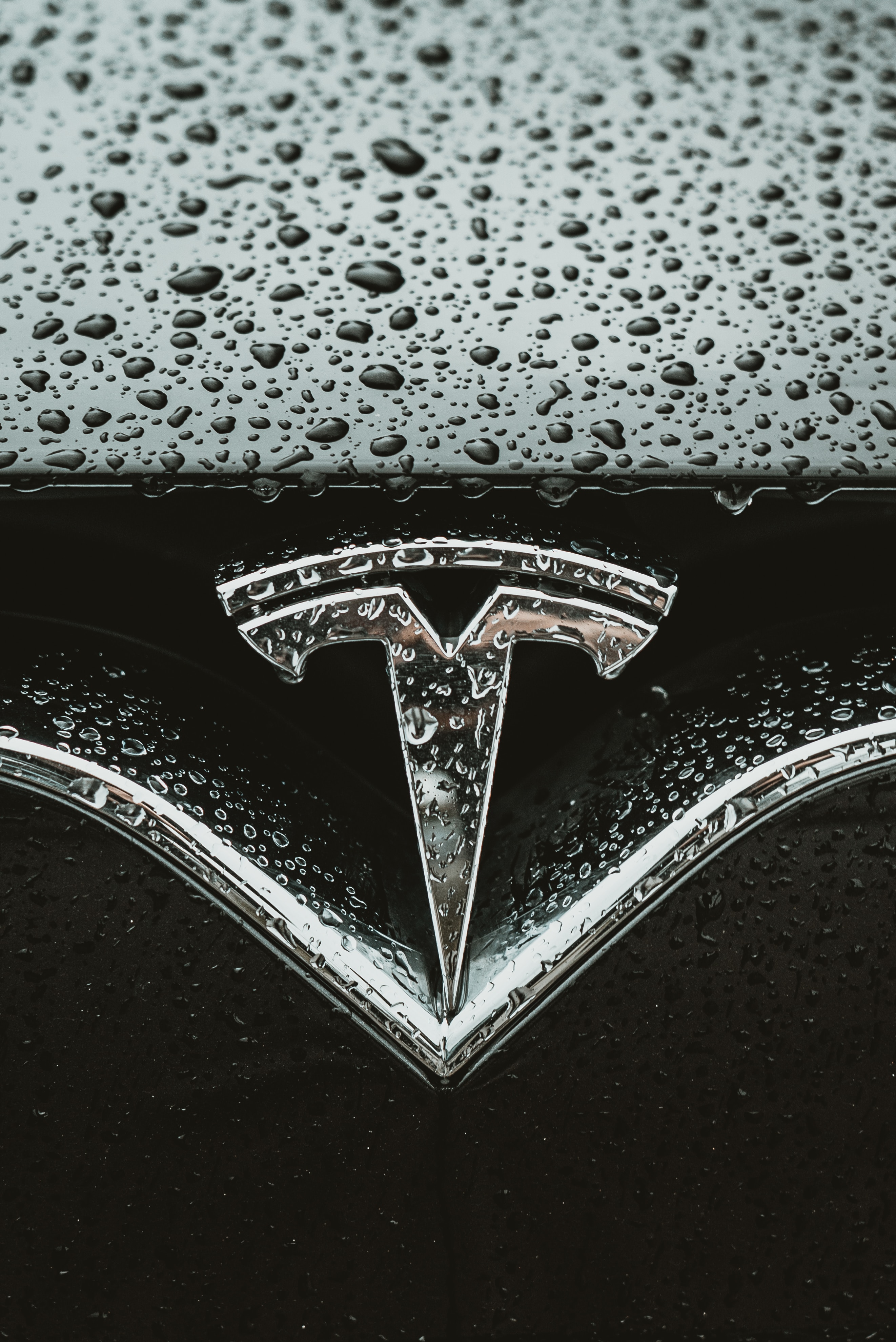
A valuable service offered by Tesla is the free charging stations provided to its customers. Although Bhavani (2018) claims that this is one of the extra expenses that has made Tesla operate at losses, the service encourages consumers to purchase electric cars since they can charge them for free when on a journey. The company also owns its service centers and showrooms from where the customers get most services including charging their vehicles. Additionally, by partnering with other companies such as Panasonic, the company has been able to cut on costs, especially on battery manufacturing. Furthermore the company has expanded by opening up several Giga factories from where it manufactures most of the input products it requires in the construction of its products (Bilbeisi & Kesse, 2017). Whereas most automotive industries partner with different companies before the completion of a car, Tesla has tried to produce most of its products, an essential factor in cost-cutting.
On the other hand, the company has diversified to a different sector, especially after the merger with Solar City. Aside from venturing into a different industry, the move is useful for the company brand as a leader in environmental conservation and the use of sustainable energy (Bilbeisi & Kesse, 2017). Currently, Tesla is a tech company, hardware supplier, car manufacturer, and a solar items producer. This business model is unique compared to other players in the market, which has made Tesla stand out in serving the niche. Maintaining this business strategy that has helped the company grow to its current position will lead the company to more success, especially in its ability to reach and serve more customers. Through such expansions, the company increases its market cap, which will impact the stock prices positively.
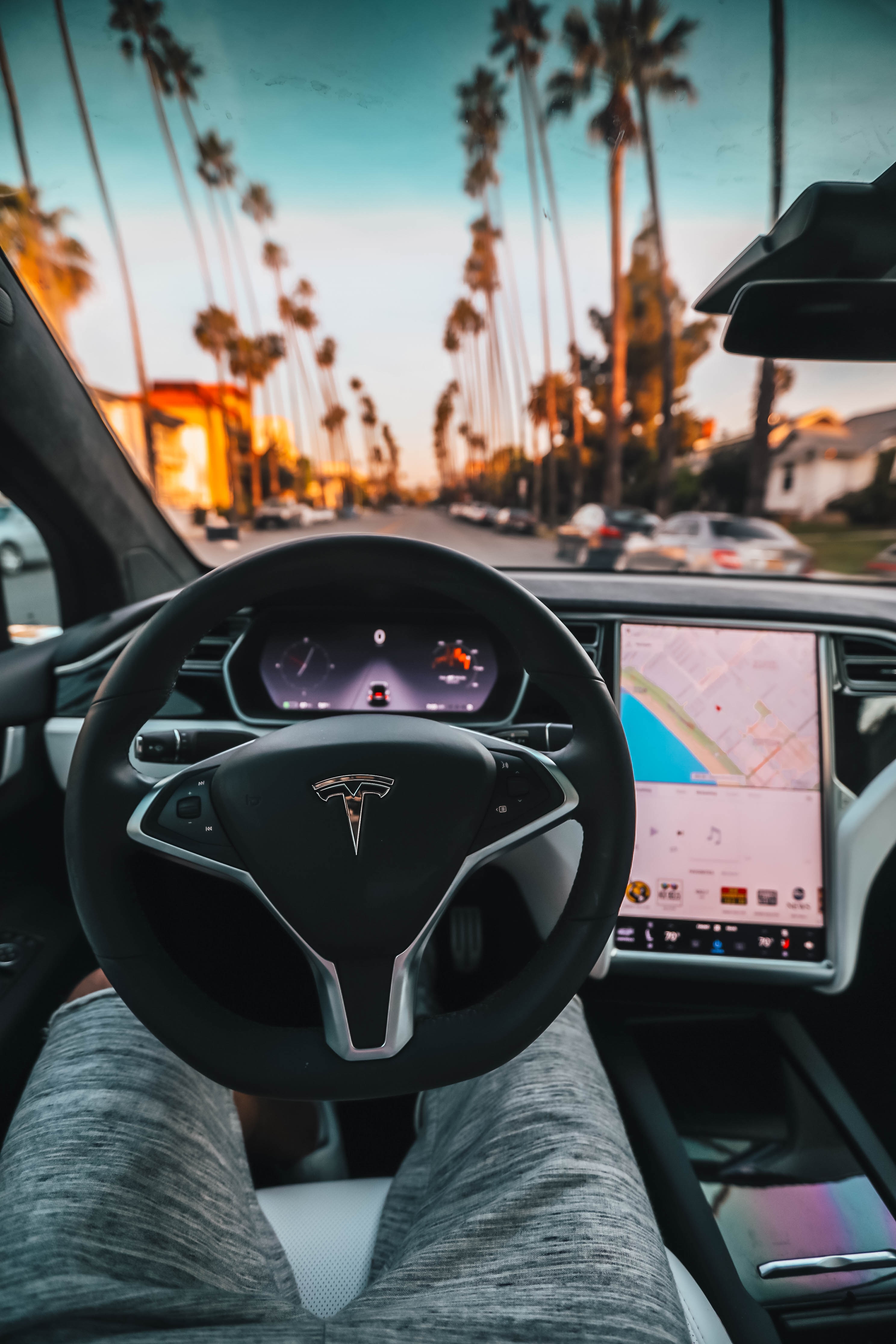
Conclusion
The different strategies adopted by a company influences the growth of the company. The strategies adopted by Tesla, including its business model, marketing strategies, leadership roles, and innovative strategies, will lead the company towards the achievement of $1,000+ per share in the next few years. The current business model and production strategies have allowed the company to develop to its present position, both in revenue amount and in the price of shares. However, for the company to achieve its sales strategy, more transformation of operation and production will be necessary. In the past decade, the company has earned a more than 1,000% growth in its market value, with the current stock market prices still increasing. This indicates that the company will continue to grow in the future.
On the other hand, the leadership of the company and business model have increasingly contributed to the growth of the company. Tesla has seen the culmination of the visions of its CEO, who remains the face of the company in the eyes of investors and customers. The company recently declared its intention to maintain Elon Musk as its CEO, despite his involvement in fraud claims. This strategy may attract more investors who will increase the demand for the company’s shares and, thus, the increase of the stock prices. Another approach is the company’s business model, as well as its marketing strategy. Tesla defied traditional marketing strategies and instead adopted online methods, as well as word of mouth marketing. This increases the efficiency of marketing methods. These strategies will contribute to the growth of the company and, thus, increasing stock prices. Just as Ron Baron envisioned the stock process of the company, it is expected that the company will experience more growth, as is the current case, allowing the share prices to reach more than $1,000.
Limitations of Research
The research relied on current sources of information that involved articles in the news, which include personal opinions of the authors, some of which could be biased. Additionally, the company does not provide much information regarding its internal processes and fundamentals, which limits the possibility of an accurate comparison of figures or trends involving the company. The research involved tracking stock prices, which change every minute and may, therefore, have used different values trading the same day. Another limitation is the different figures used by different authors while discussing the same companies, which may have led to varying conclusions regarding the same issue. Future research can be done regarding why Tesla may not be able to provide cheaper electric vehicles as anticipated.
Sources
Atkins, B. (2019). Tesla’s Leadership Challenge. Forbes.com. Retrieved 12 January 2020, from https://www.forbes.com/sites/betsyatkins/2019/02/25/tesla-is-imploding-again/#454fd4b868e1
Bhavani, G. (2018). Financial statements analysis on Tesla. Academy of Accounting and Financial Studies Journal. Retrieved from https://www.google.com/url?sa=t&rct=j&q=&esrc=s&source=web&cd=2&cad=rja&uact=8&ved=2ahUKEwjr-ZfkzP3mAhUGQ8AKHQlMAQAQFjABegQIBRAB&url=https%3A%2F%2Fwww.researchgate.net%2Fpublication%2F330523457_Financial_Statements_Analysis_on_Tesla&usg=AOvVaw34DOlltTxfYIZVOMNhxCBO
Bilbeisi, K. M., & Kesse, M. (2017). Tesla: A successful entrepreneurship strategy. B> Quest. Retrieved from https://www.google.com/url?sa=t&rct=j&q=&esrc=s&source=web&cd=1&cad=rja&uact=8&ved=2ahUKEwipsYnWzP3mAhWIYcAKHba-CGsQFjAAegQIARAC&url=https%3A%2F%2Fwww.westga.edu%2F~bquest%2F2017%2Ftesla2017.pdf&usg=AOvVaw1_frq0xYflbWmlgqB0C-8K
Cecere, F., Gambino, G., & Mollura, M. (2016) Tesla Motors IPO The next bubble. Unpublished Article, Università Cattolica del Sacro Cuore. Retrieved from https://www.researchgate.net/profile/Giancarlo_Gambino/publication/303437246_Tesla_Motors_IPO_The_next_bubble/links/5742ec0208ae298602ee6360.pdf
Chen, Y., & Perez, Y. (2018). Business model design: lessons learned from Tesla Motors. In Towards a Sustainable Economy (pp. 53-69). Springer, Cham.
Cornell, B., & Damodaran, A. (2014). Tesla: Anatomy of a run-up. The Journal of Portfolio Management, 41(1), 139-151.
Feuer, W. (2020). Tesla reaches all-time high. CNBC. Retrieved from https://www.cnbc.com/2019/12/18/tesla-stock-reaches-52-week-high.html
Gebert, M. (2014). Could tesla motors be the new Nokia for the automotive industry? Crowd Mentor Network/Marketing Society. Retrieved from https://www.researchgate.net/profile/Michael_Gebert2/publication/261356392_Could_Telsa_Motors_be_the_new_Nokia_for_the_automotive_industry/links/00463533eabd7263ec000000/Could-Telsa-Motors-be-the-new-Nokia-for-the-automotive-industry.pdf
Gov Capital (2020). Tesla stock forecast, TSLA price prediction: Buy or sell Tesla, Inc shares?. Retrieved from https://gov.capital/stock/tsla-stock/
Huang, Y. (2019, February). A Potential Company or Not: the Analysis of Tesla. In 2019 4th International Conference on Financial Innovation and Economic Development (ICFIED 2019). Atlantis Press.
Kancherla, Y. D., & Daim, T. U. (2018). Technology Roadmap: A Roadmap for Tesla. In Infrastructure and Technology Management (pp. 347-366). Springer, Cham.
Liu, J. H., & Meng, Z. (2017). Innovation model analysis of new energy vehicles: taking Toyota, Tesla and BYD as an example. Procedia engineering, 174, 965-972.
Molnar, M. (2019). The X Factor For Tesla May Surprise You. Retrieved from https://www.forbes.com/sites/michaelmolnar/2019/09/27/the-x-factor-for-tesla-may-surprise-you/#2b1441d16b07
Reinicke, C. (2020). Tesla’s market value is now more than Ford and GM combined | Markets Insider. Retrieved from https://markets.businessinsider.com/news/stocks/tesla-stock-price-gains-market-value-higher-ford-gm-combined-2020-1-1028806569
Riley, C. (2019). The great electric car race is just beginning. Retrieved from https://edition.cnn.com/interactive/2019/08/business/electric-cars-audi-volkswagen-tesla/
Statista (2020). Tesla – Statistics & Facts. Retrieved from https://www.statista.com/topics/2086/tesla/
Sierzchula, W., Bakker, S., Maat, K., & Van Wee, B. (2012). The competitive environment of electric vehicles: An analysis of prototype and production models. Environmental Innovation and Societal Transitions, 2, 49-65.
Tesla – Stock Price History | TSLA (2020). Retrieved from https://www.macrotrends.net/stocks/charts/TSLA/tesla/stock-price-history
Tesla Management (n.d). Retrieved from https://ir.tesla.com/corporate-governance/management
Thomas, V. J., & Maine, E. (2019). Market entry strategies for electric vehicle start-ups in the automotive industry–Lessons from Tesla Motors. Journal of Cleaner Production.
Wagner, I. (2020). Topic: Tesla. www.statista.com. Retrieved from https://www.statista.com/topics/2086/tesla/
Wayland, M., & Kolodny, L. (2020). Tesla tops Wall Street estimates with a record 112,000 vehicle deliveries in fourth quarter. CNBC. Retrieved from https://www.cnbc.com/2020/01/03/tesla-tsla-4q-2019-production-and-delivery-numbers.html
 Figure 1
Figure 1
 Figure 3
Figure 3
 Figure 5
Figure 5 Figure 6
Figure 6 Figure 7
Figure 7

 Figure 10
Figure 10
 Figure 12
Figure 12 Figure 13
Figure 13 Figure 14
Figure 14


